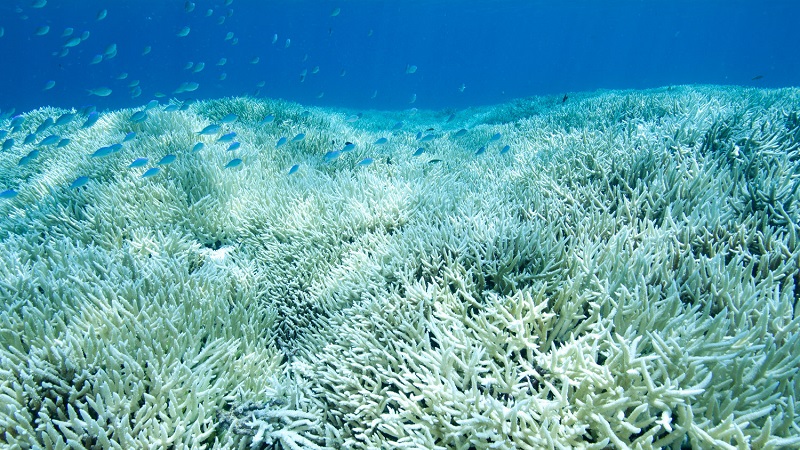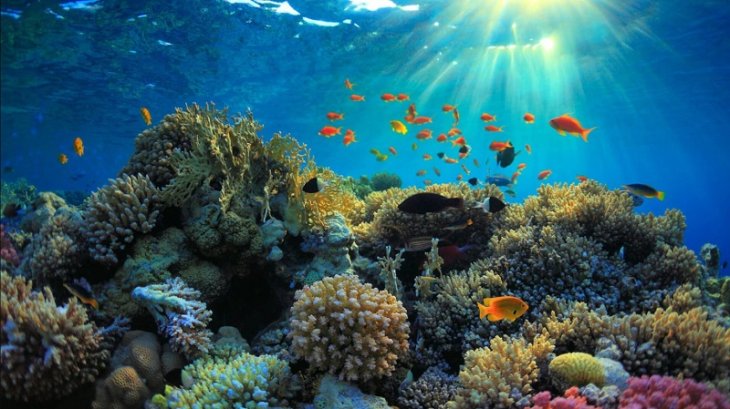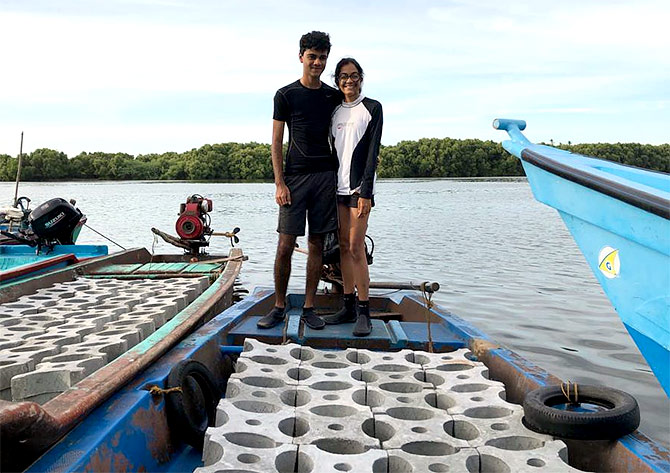To Save Marine Life, This 17-Year-Old Has Created The First 3D-Printed Coral Reef In India
Harin - Jul 30, 2019

With an aim to deal with India’s coral reefs threat, 17-year-old Siddharth Pillai has developed a 3D-printed artificial coral reef.
- India’s First 3D-Printed Building With Indigenous Construction Materials
- KFC Plans To Make 3D-Printing Chicken And Add It To Their Menu
- Scientists Use Math To 3D Print The World's Strongest Steel
Climate change has been affecting our environment negatively. For example, the melting rate of the Alaskan glaciers is 100 times faster while global warming is putting marine life in danger. Pollution, rising ocean temperatures, and increased fishing are causing the depletion of coral reefs which reduce coastal erosion and act as a shelter for many marine organisms. With an aim to deal with India’s coral reefs threat, 17-year-old Siddharth Pillai, a Class XI student at Mumbai’s BD Somani School, has developed a 3D-printed coral reef.

The first-ever 3D-printed reef in India was named after Chester Bennington, the late vocalist of Linkin Park.
Siddharth has spent over a year working on the design. He has also filed for a patent for his interlocking block system. The 3D-printed reef which is 20m long will be placed along the Puducherry coast. It will take about a month for the marine life to host on the reef, according to experts.
Siddharth, as a scuba diver, has been diving for the last five years. He even has a scuba diving Masters’ certificate.
During this, he has seen how the coral outcrops have been bleached by the rising ocean temperatures.
He says:

Siddharth learned about the bleaching of coral reefs as well as the global situation’s precariousness with regard to the overall marine ecosystem when he was 16. And ever since then, he decided to try his best to make a contribution towards saving these marine animals.
In his journey on finding a solution, Siddharth chose to make a 3D-printed coral reef. He attended a 45-day course back in May last year, finding a way to make the model become porous so that the corals can stick to it.

His first prototype was a cement-mixed mold which he made at home. But then he noticed that he needed to make a big enough model to cover the coastline.
Through crowdfunding, Siddharth raised an amount of money of Rs 2 lakh and produced around 200 11-kilogram blocks. When the 3D-printed coral reef was completed, it was transferred to Puducherry, where his dive center, Temple Adventures help him place the model along the coastline.
The marine life will now start hosting on the artificial reef which also helps fish escape from the fishing nets.
Marine biologist Suneha Jagannathan, in an interview with the Hindustan Times, said:

However, Siddharth explained that the artificial reef can only help the polyps grow. It cannot end the coral reef’s bleaching effect. For this, the oceans’ warming needs to be stopped.
Siddharth and Temple Adventures are now working together to initiate a Reef Rebuilding program through which divers can make their contributions towards conserving and developing the artificial reef. He will deliver a speech on this matter at the International Congress of Conservational Biology held in Kuala Lumpur this year.
Featured Stories

Features - Jul 01, 2025
What Are The Fastest Passenger Vehicles Ever Created?

Features - Jun 25, 2025
Japan Hydrogen Breakthrough: Scientists Crack the Clean Energy Code with...

ICT News - Jun 25, 2025
AI Intimidation Tactics: CEOs Turn Flawed Technology Into Employee Fear Machine

Review - Jun 25, 2025
Windows 11 Problems: Is Microsoft's "Best" OS Actually Getting Worse?

Features - Jun 22, 2025
Telegram Founder Pavel Durov Plans to Split $14 Billion Fortune Among 106 Children

ICT News - Jun 22, 2025
Neuralink Telepathy Chip Enables Quadriplegic Rob Greiner to Control Games with...

Features - Jun 21, 2025
This Over $100 Bottle Has Nothing But Fresh Air Inside

Features - Jun 18, 2025
Best Mobile VPN Apps for Gaming 2025: Complete Guide

Features - Jun 18, 2025
A Math Formula Tells Us How Long Everything Will Live

Features - Jun 16, 2025
Comments
Sort by Newest | Popular